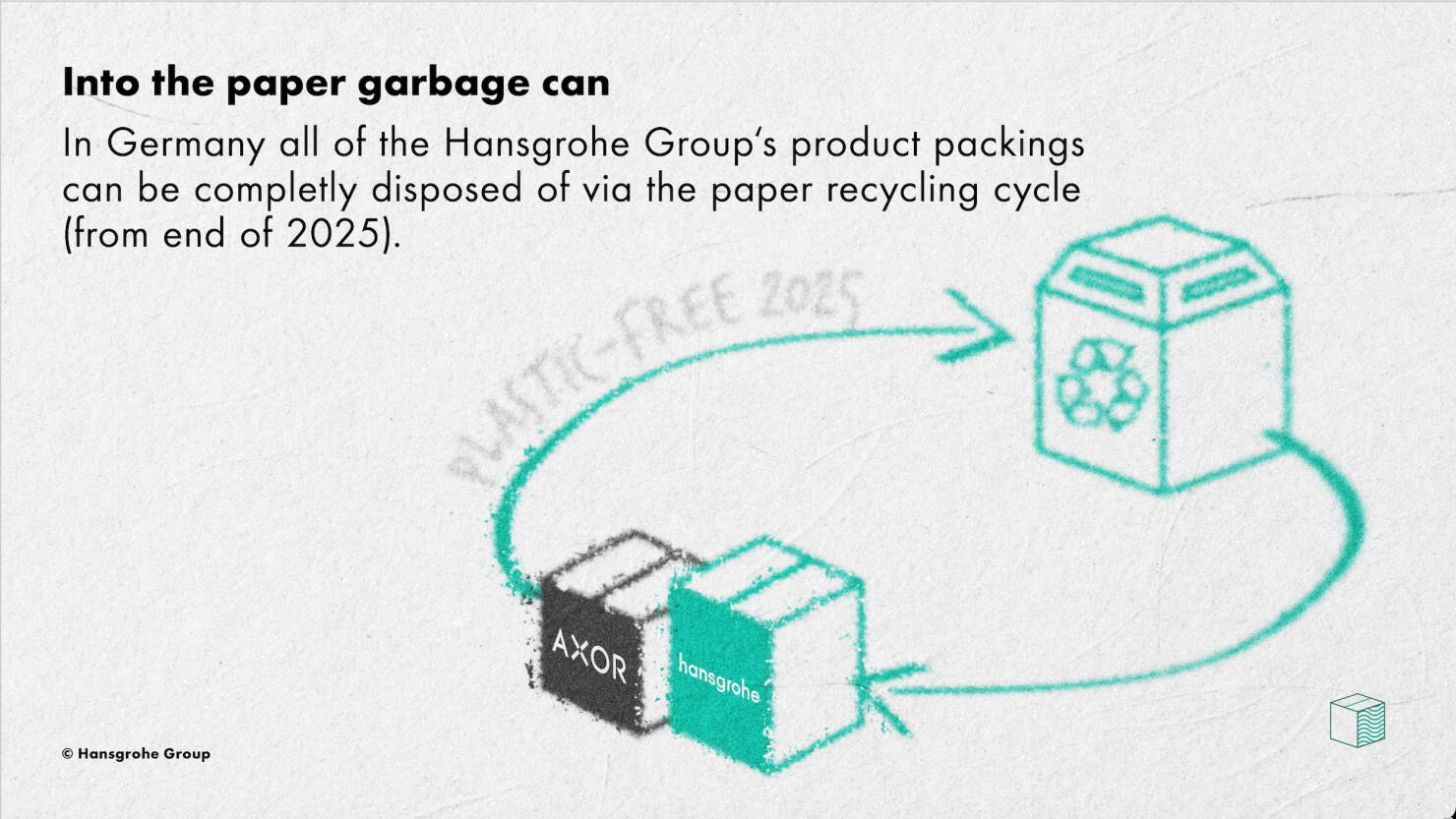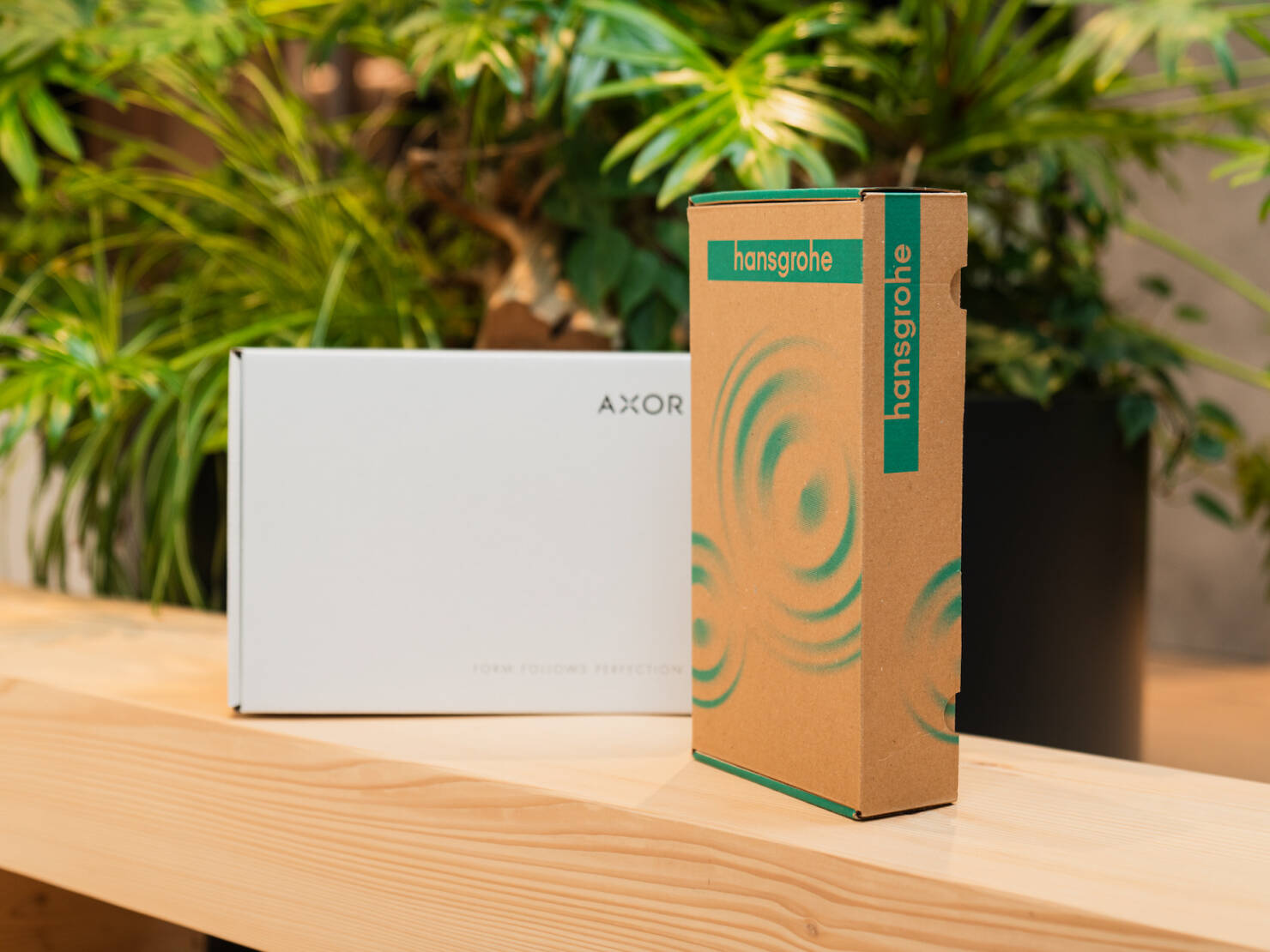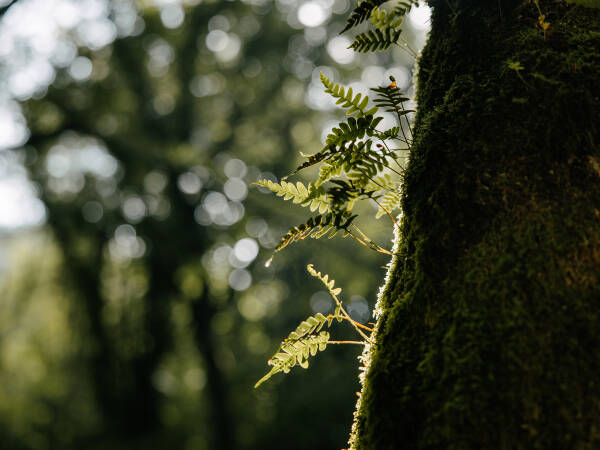The Road to Plastic-Free Product Packaging
100% plastic-free product packaging by the end of 2025 - that is the Hansgrohe Group's ambitious goal for the German market. All new product packaging for AXOR and hansgrohe is already fully recyclable via the paper recycling loop, despite a residual plastic content of 5%. This is currently still indispensable for protection of products and production reasons.
Paper and cardboard – inside and out

This far-reaching change not only affects the outer cartons, but also everything inside: all flat bags, bubble bags, chain bags, self-adhesive films and cable ties will be made of cardboard or paper in future.
Behind this project are the Green Company and the Value Engineering teams. Green Packaging is one of the ten initiatives that it's innovation developers have derived from the Hansgrohe sustainability strategy. It is based on the strategic pillars of resource saving and the circular economy.
Behind the scenes: plastic-free in just a few months
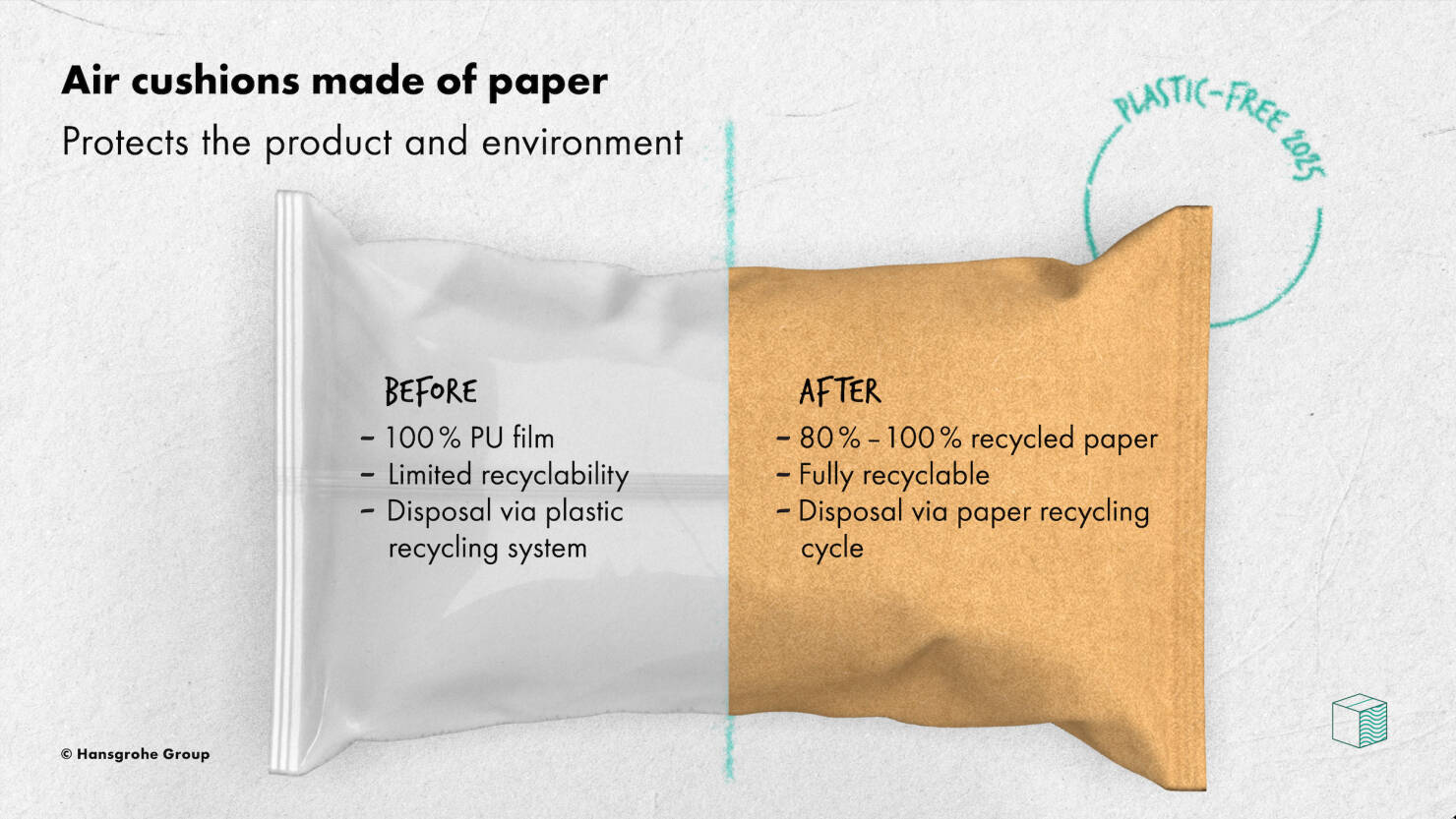
The Green Company team started with a 360-degree workshop and brought all stakeholders on board: retail partners, logistics service providers, AXOR and hansgrohe brand leadership, production and sales. The focus was on the complete life cycle of standard product packaging.
Following the workshop, the team embarked on an intensive material scouting exercise with the help of a specific requirements profile. From bioplastics to grass paper, various sustainable alternatives were initially considered. However, bioplastics failed due to the requirement for simple and most complete recycling possible, while grass paper failed due to the excessive dust pollution for the printing machines.
Once to Spain and back again
The material scouting was followed by intensive transport simulations, supplemented by real sample deliveries to Spain, as well as drop tests in the Hansgrohe test laboratory. The material strength and protective performance of the alternative materials were tested, as well as their behavior in relation to the surface coatings of the shower heads and faucets.
Why paper?
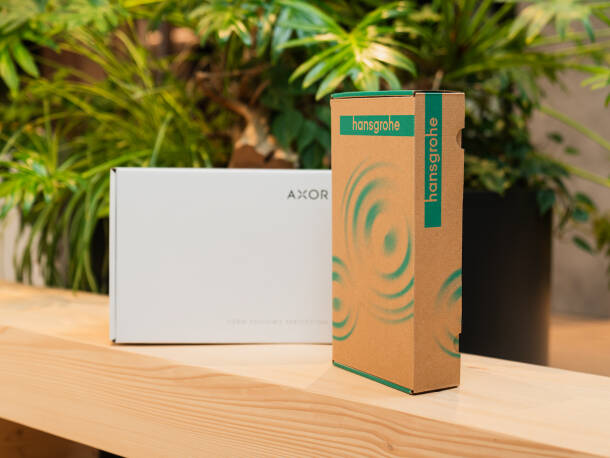
Paper is an excellent recycling material, as paper fibres can be recycled ten to 25 times. In addition, the paper recycling cycle works very well throughout Europe with a recycling rate of 95.4 per cent.
Therefore, the paper packaging for AXOR and hansgrohe branded products will consist of up to 80 percent recycled paper, which comes from the region. Hansgrohe also is reducing the number of packaging variations across all brands. This helps to optimize transport and warehouse logistics – and saves resources, too.
Less plastic means less microplastic
345 tons per year: That's how much plastic the Hansgrohe Group has used to date in Germany to protect its faucets and showers from scratches, knocks and fingerprints. Product protection is still very important, because every production or warehouse reject also harms the environment. This is equally a question of preserving resources. Thanks to the new packaging solutions, however, Hansgrohe will save 310 tons of plastic per year in the future.
Avoiding plastic reduces the risk of improper disposal
Background: At 1.5 million tons per year, sales packaging accounts for the largest proportion of all plastic waste in Germany. Not all of this is disposed properly and recycled, but rather ends up in the environment. The world's oceans already have a plastic problem, which is reflected in microplastics and trash swirls, thus also ending up in our food chain via marine animals.
Plastic does not simply disappear into thin air: According to scientists, a plastic bottle, for example, takes up to 450 years to completely decompose in the sea.
We are committed to less plastic in the world
As sponsor of the swimming chemistry professor Andreas Fath, the Hansgrohe Group has been campaigning for clean waters for years. Fath has already swum across the Rhine and the Danube in a publicity campaign, taking water samples to document the level of pollution caused by microplastics and other substances - pollution that reaches the world's oceans via rivers. His next project is the Elbe, which he will swim from source to mouth in the summer of 2024, accompanied by his research team.

